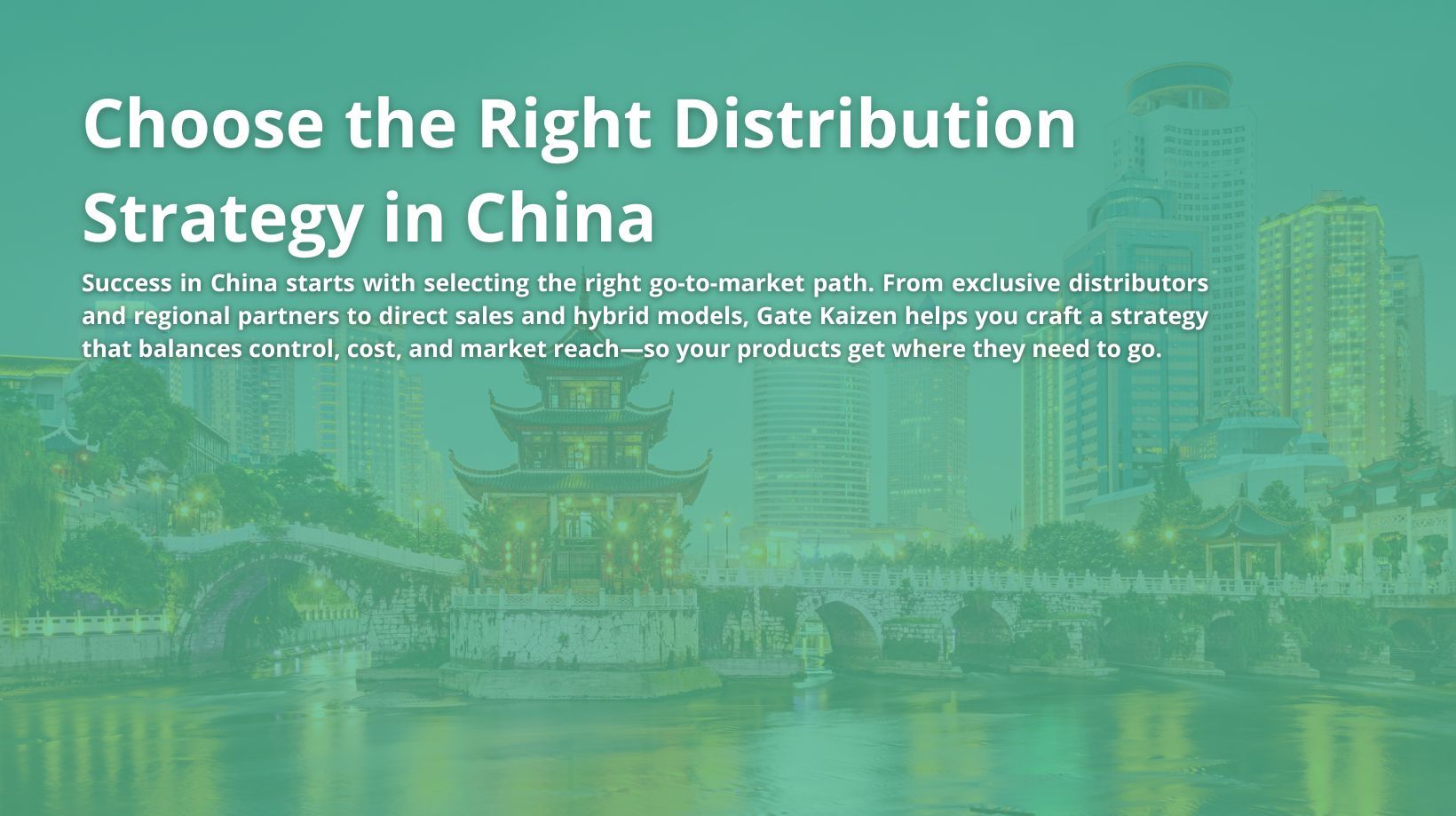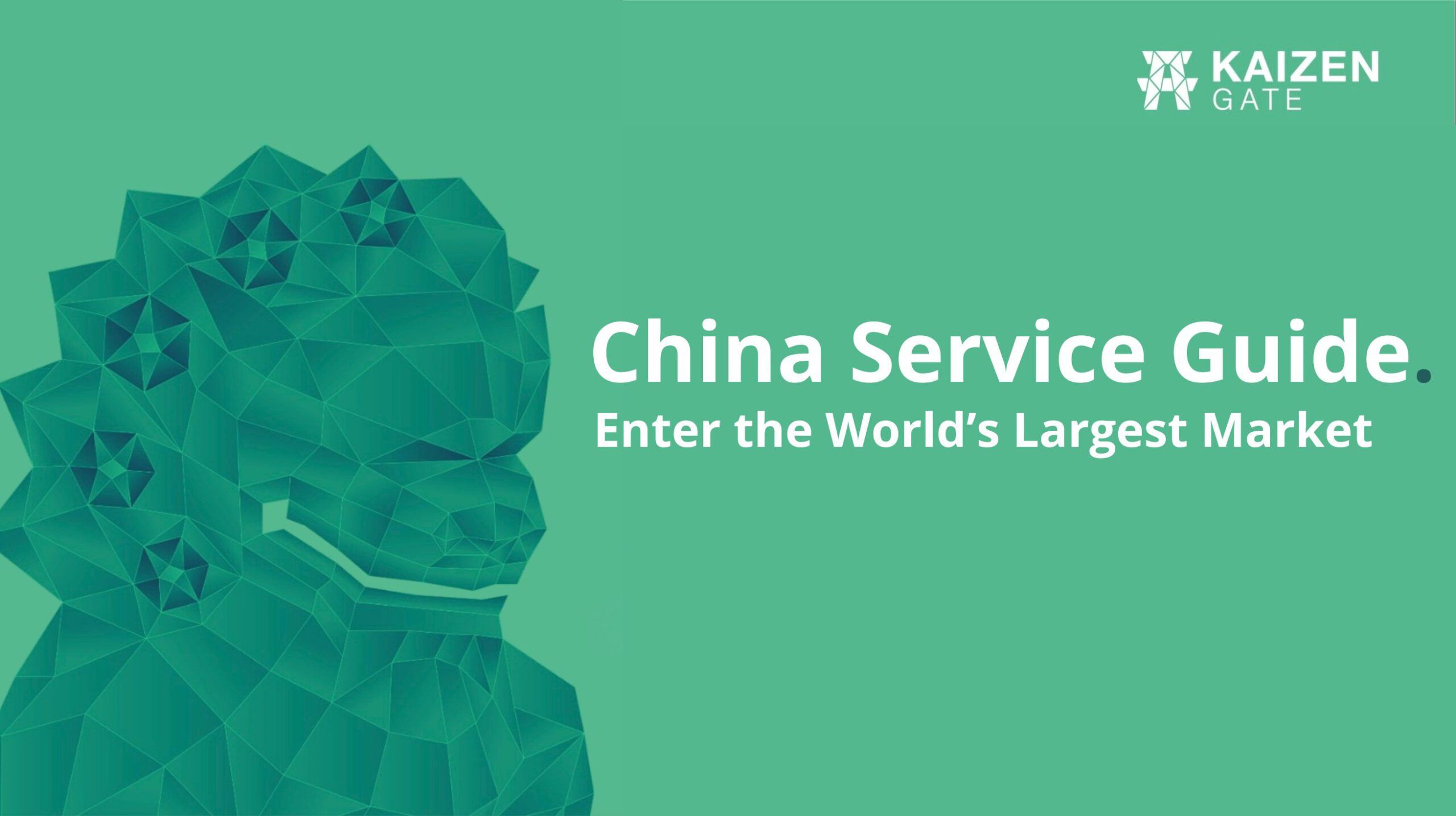Expanding into the Chinese market is a major opportunity for any company looking to drive international business growth. China offers a vast consumer base and dynamic retail and e-commerce channels, but successful business development in China requires navigating unique challenges, from complex distribution systems and regulations to strong local companies.
As a business development manager or export executive of a mid-sized consumer goods company, you must consider an array of factors: choosing the right distribution channels, complying with local regulations, outmaneuvering strong local competitors, and building relationships in a business culture where trust (guanxi) is paramount.
One critical decision is your distribution channel strategy. Should you partner with a local distributor, hire a sales agent, or establish your own local presence? Each route has pros and cons in terms of control, cost, and market reach.
Crafting an Effective Distribution Channel Strategy
A well-defined distribution channel strategy is the foundation of a successful China market entry plan. Rather than jumping at the first available partner, take time to map out how your products will reach consumers across China’s vast geography and multiple retail channels.
Key questions include: Will you sell through intermediaries or directly? Focus on online, offline, or both? What distribution model balances control, cost, and coverage for your business?

Common distribution models in China: Pros and Cons
Exclusive Distributor: You partner with one local distributor who handles importing, marketing, and sales across China. This one-stop approach can quickly give you access to established channels and expertise. The benefit is simplicity and lower upfront cost. However, if they underperform or prioritize other brands, your growth may stall. You also sacrifice some control over pricing and customer relationships, and risk to become too dependent on one single point of entry.
Multiple Regional Distributors: Instead of one national partner, you use several localized distributors for different regions or sales channels. For example, you might appoint one distributor for different cluster regions: North / South / East / Central China, or separate partners for e-commerce vs. brick-and-mortar retail. This can improve coverage and reduce reliance on a single partner. The trade-off is added management complexity and price rivalry. Many important distributors won’t accept non-exclusive distribution, so you will be left with partners with smaller capability. It’s beneficial to appoint a dedicated key account manager to oversee each distributor and to keep them accountable to targets and ensure consistent pricing and branding across regions.
Direct Sales (Local Office or E-commerce): Some companies establish their own local presence by setting up a subsidiary and building an in-house sales team. This path requires significant investment but gives you full control. Many brands also start selling direct-to-consumer via e-commerce platforms like Tmall or JD.com to test the market without physical stores. Direct distribution yields richer market feedback and control over the brand, but it comes with higher costs and operational responsibilities. It may be a longer-term goal once your sales justify deeper investment.
Hybrid Approach: A combination of the above models can offer a balance of reach and control. For example, use distributors for brick-and-mortar stores while managing your own online sales channel. This leverages the distributor’s strengths while preserving some direct connection to customers. Hybrids need careful handling to avoid channel conflicts (like pricing discrepancies), but when executed well, they offer both breadth and depth in market coverage.
Choosing the right model depends on your resources, product type, and long-term vision. Many mid-sized brands start with a distributor-focused model to gain initial traction, then gradually increase direct involvement (such as adding an online store or a small local team) as they learn the market.
Finding and Managing Distributor Partnerships
If you choose to work with distributors, finding the right ones and managing the relationship is critical:
Find and Vet Partners: Use a thorough distributor search via industry contacts, trade shows, and online research to list potential partners. Look for distributors with a solid reputation, experience with similar products, and the necessary licenses and logistics to handle your goods. Always check references, speak with brands they currently distribute, to verify their performance. Avoid distributors who insist on exclusivity without proven capability or transparency.
Clear Agreements & Targets: Negotiate a contract that clearly defines the territory or sales channels each distributor covers, whether they have exclusivity, and what their sales targets are. Assign responsibilities for marketing and after-sales support as well. Setting concrete KPIs (e.g., quarterly sales minimums) and review milestones (like a performance review after one year) will help keep your distributor accountable and give you recourse to adjust the arrangement if expectations aren’t met.
Relationship Management: Treat your distributor as a key account (active key account management from your side is essential). Maintain frequent communication and build trust, ideally through a dedicated sales agent or account manager on your team who speaks the language and understands the culture. Regular check-ins on sales progress, joint business planning, and providing training and marketing support will encourage the distributor to prioritize your brand. If issues arise, address them collaboratively. Investing time in the relationship builds trust, which often translates into greater effort from the distributor.
Stay Flexible: Be ready to adjust if a distributor underperforms. Have backup options or a plan B in case you need to switch partners or add another to cover the market. Maintain flexibility to respond to market changes and growth opportunities (for example, adding a second distributor in a new region as demand picks up), while ensuring any changes are handled transparently to avoid conflicts.

Using Sales Agents as an Alternative
Another route is to recruit sales agents instead of relying on distributors. A sales agent represents your product to buyers (without purchasing stock) and earns a lower base salary than an account manager as it has a variable remuneration through commission on orders. This approach gives you more direct control over customer relationships and feedback, which can be especially useful for specialized or premium products that need hands-on selling. You can recruit different sales agent for each region to avoid relying on one single point of entry to market.
However, using agents means you handle the import, inventory, and delivery logistics yourself (since the agent only focus on sales and business development). For many mid-sized companies, the agent model works best when paired with support from a local partner which takes care of import, warehousing, distribution and invoicing. Platforms as Gate Kaizen can take care of logistic operations as well as sourcing and managing local sales agents on your behalf, giving you a ready sales force in the market while you retain control over strategy and branding.
Collaborative Growth Models: The “Kaizen Ecosystem”
Expanding to China doesn’t always have to mean doing it all alone. A newer approach is to join collaborative networks or ecosystems that help multiple foreign companies share resources and knowledge. The idea behind the Kaizen Ecosystem is that by pooling efforts, companies can enter the market more efficiently and cost-effectively.
What is the Kaizen Ecosystem? It’s a collaborative growth model where multiple companies leverage a shared platform (Gate Kaizen) to handle market entry tasks together. Instead of each company building its own distribution setup, they tap into a collective infrastructure:
- Shared Distribution and Logistics: The ecosystem provides a ready-made logistics and distribution network. For example, it might have centralized warehousing and transportation that all member companies use. You could store your products in a common warehouse and use the platform’s distribution channels to reach stores or customers throughout China. This dramatically cuts cost because you’re sharing warehouse space and delivery routes with other brands.
- Collaborative Market Expertise: Companies in the ecosystem benefit from the platform’s local knowledge and from each other’s experiences. The platform’s team provides guidance on regulations, marketing trends, and consumer preferences, creating a continuous improvement loop (hence “Kaizen”).
- Shared Sales Force: In some cases, the collaborative model extends to a shared sales force or network of agents who represent a portfolio of non-competing foreign brands. For instance, an agent might visit a retail chain and present a suite of imported products rather than just one, making the meeting more valuable for the buyer. Each participating company gains exposure that it might not have achieved alone, essentially making use of the group’s collective value.
Gate Kaizen, acts as a one-stop partner with a full local team (experts in logistics, warehousing, customs, e-commerce, and branding). By joining, you can import and distribute in China without a local entity, the platform handles the key sales operation task (from customs clearance and storage to deploying local sales support) under a cost-sharing model. Your company focuses on product and strategy while the platform executes with boots on the ground.
Key Benefits:
- Lower Costs: You dramatically cut initial investment and share ongoing expenses (like warehousing and marketing) with others, improving ROI for everyone.
- Faster Market Entry: The infrastructure is ready-made, so you can start selling in China much sooner than if you built everything from scratch.
- Scalable Resources: Mid-sized brands can punch above their weight by leveraging the platform’s local team and network, gaining access to resources akin to a much larger company.
This model is especially useful for mid-sized companies that want to achieve a strong presence without bearing the full cost alone. By collaborating, you get the advantages of scale and local know-how, while mitigating risk and investment. The Kaizen Ecosystem essentially lets you plug into an existing China distribution engine, which can shorten your learning curve and accelerate growth.

Gate Kaizen is the trusted partner of large and mid-cap companies as a provider of market entry services and HR Solutions in the Chinese market. We help your business save the outsantding costs of setting up your local entity by leveraging our own structure and the shortcuts of the digital era to minimize the financial risks of expanding overseas. This way, you can focus your attention on what really matters: your business.
Key Takeaways for Driving Business Growth in China
Entering China requires a blend of strategic planning, local insight, and agile execution. Here are the key takeaways for successful business development in China:
Plan Your Distribution Channel Strategy: Evaluate whether an exclusive distributor, multiple distributors, direct sales, or a hybrid approach best fits your goals. Having this plan up front will guide all other decisions.
Choose Partners Carefully: Whether you use distributors or agents, select partners with proven capability and a good cultural fit. Conduct due diligence during the distributor search and set clear agreements.
Invest in Relationships: Success in the Chinese market often comes down to trust. Leverage partners who already have established local relationships in market. Building strong relationships with your distributors, agents, and key clients may take a long time.
Leverage Collaborative Platforms: Consider using collaborative models like the Kaizen Ecosystem. These platforms can be used as launchpad, providing all-in-one support for distribution, sales, and logistics. This approach can speed up market entry and reduce costs for mid-sized firms.
Be Prepared Operationally: Don’t overlook logistics and compliance. If sales take off, you need to meet demand reliably, operational readiness is a key success factor. Line up the necessary import, warehousing, and fulfillment arrangements so you can deliver on your promises.
Stay Adaptable and Committed: You might need to adjust your strategy as you learn what works add a distributor, tweak the product design, or increase marketing in a particular region. Building a brand and distribution network in China takes time, but the payoff can be significant for those who persist.
By approaching China with a clear plan, the right partners, and a willingness to learn and adapt, mid-sized consumer goods companies can turn the challenges of market entry into a successful China business growth story. With savvy distribution strategies and collaborative support, you can navigate the complexity and position your brand for sustainable success in the Chinese market.

